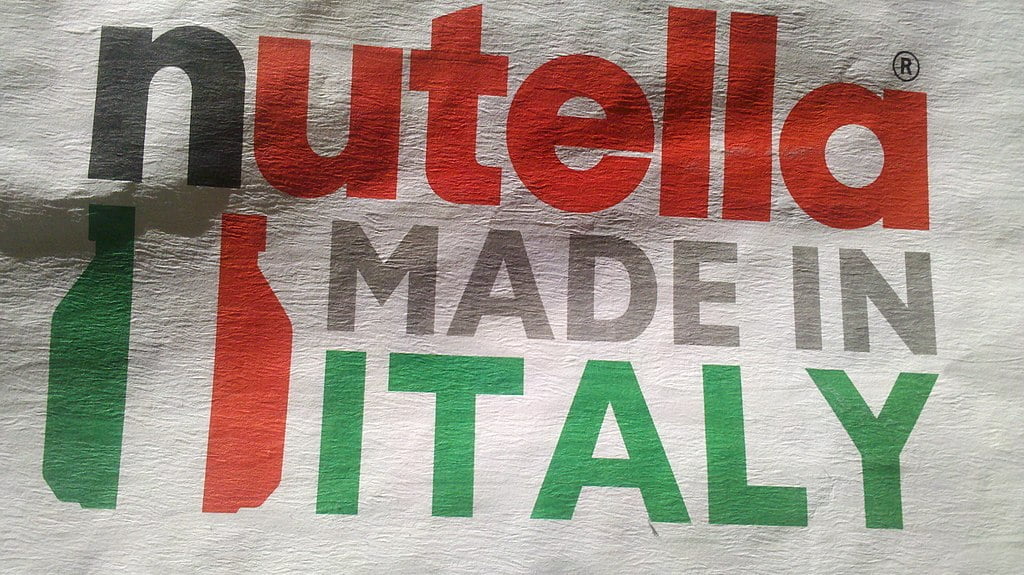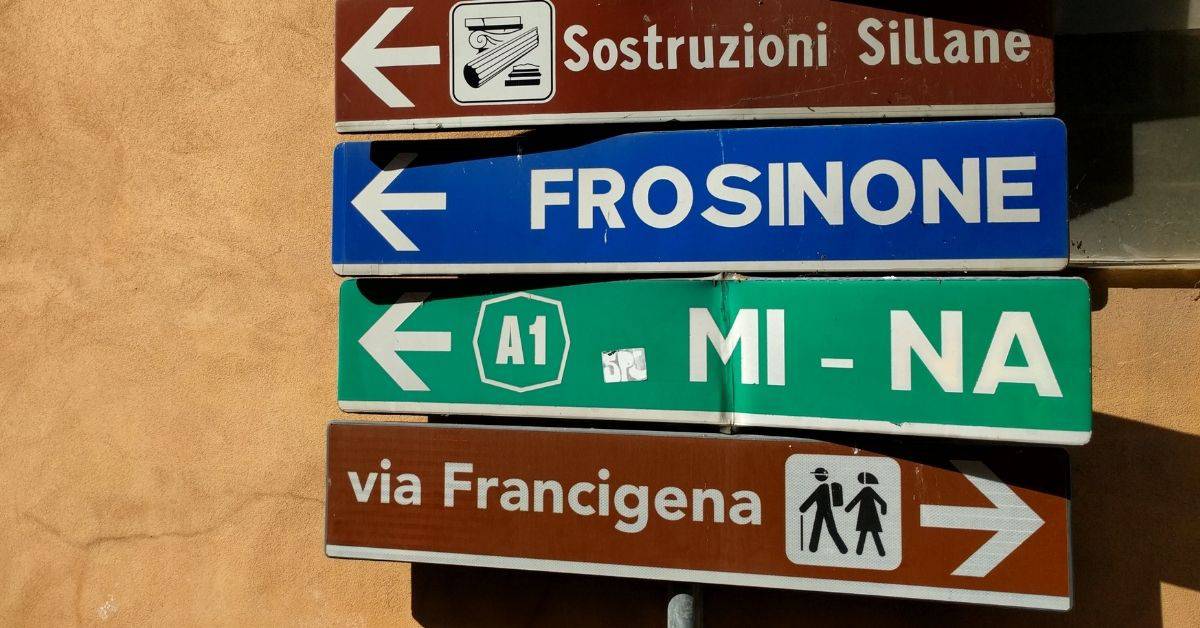The highly cultured people of the Etruscans lived in Etruria, present day Tuscany and Lazio. Join us on our initinary to some Etruscan sites in Lazio, Italy.
Where is Etruria?
The land where the Etruscans lived is located roughly between Florence and Rome in today’s regions of Tuscany and Lazio. This area is wedged between the Apennine mountains and the Mediterranean Sea. The region of Lazio names the Etruscan part of its territory Tuscia, after the Latin word for ‘Etruscan land’.
Who were the Etruscans?
The Etruscans were a people in central Italy who dominated the Mediterranean in their heyday (6th-4th centuries BC). They were good at handicrafts and trade. That is why their jugs, rings, weaponry and statues have been found around the Mediterranean, but also in parts of Europe. From amphorae in the French Rhône region to terracotta figurines in today’s Ukraine.
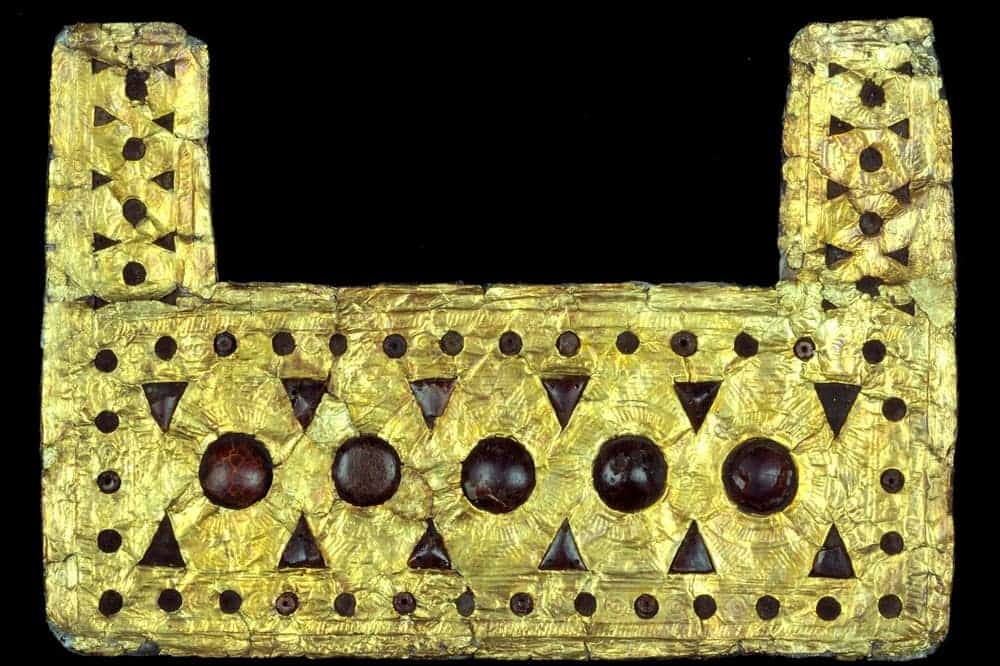
Etruscan gunsmiths may have been very skilful in the manufacture of (bronze) weaponry, but that did not mean that the Etruscans made a hobby of the military business. They had more of a penchant for comfort and luxury living. This is evident from their craftsmanship. It is also evident in the writings of mainly Roman scribes. Catullus and Virgil, two poets who were contemporaries of Julius Caesar, refer to the Etruscans respectively as “Obesus” and “Pinguis” (“fat”).
This content is not shown.
Click on this block to display all our content, by accepting our cookies or review our cooky-policy below.
The Etruscans owe this image to their banquets, the lavish eating and drinking parties. Fat Etruscans lounging at the dinner table, such scenes can indeed be seen on coffins and wall paintings. In reality, such banquets and the Etruscan penchant for dolce far niente (‘doing nothing’) were something of the upper class of late.
Tour of Etruria
- Norchia
- Vulci
- Taquinia
- Ceveteri
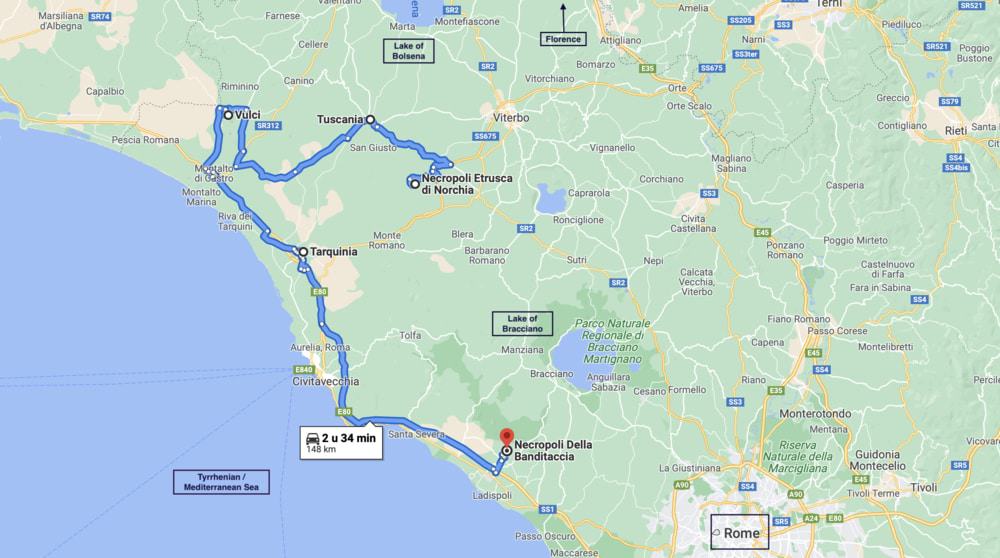
1. Norchia
In Norchia, there is no sign of Etruscan decadence. On the contrary, the tombs have been neatly carved. This took precision and careful deliberation. The tombs are empty. Looted a long time ago. This is another reason why Norchia is such an evocative place. It is not visited by tourists. It is too remote for that. All the better for you and me.
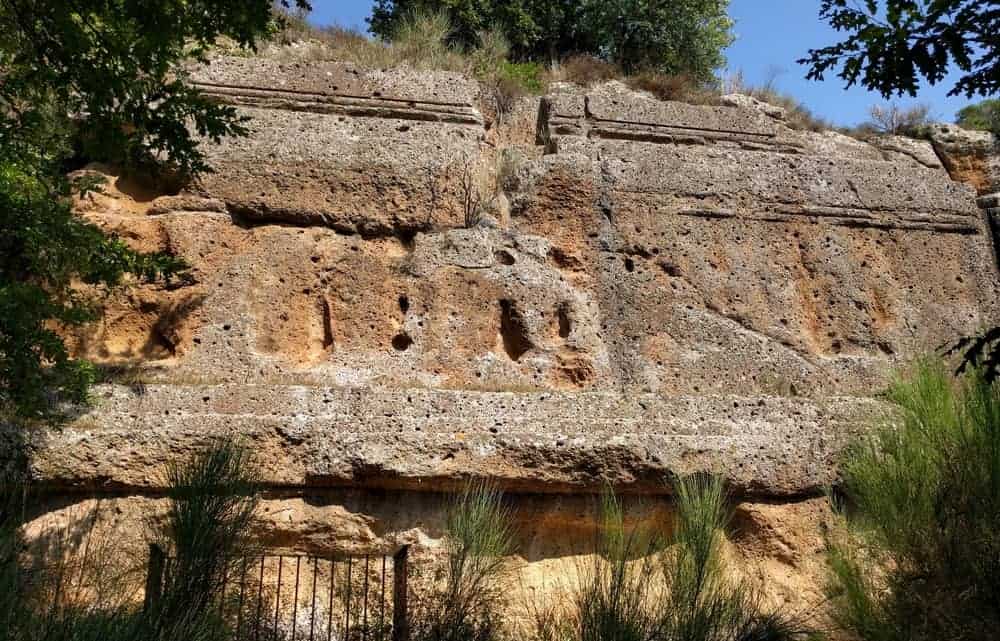
It is as if you have discovered a new (dead) city yourself. Of course, that is not the case. There are even signs from the archaeological department, but it is clear that for decades no one has been engaged in this excavation. The vegetation is dense. The rain makes the stones slippery. There is no first aid nearby. You feel like an Indiana Jones.
This content is not shown.
Click on this block to display all our content, by accepting our cookies or review our cooky-policy below.
2. Vulci
Tuscia is also home to the archaeological nature reserve of Vulci. Unlike Norchia, Vulci was a large town. “A metropolis,” says park director Emanuele Eutizi. “At its height around 550 BC, there were probably 15,000 to 18,000 people living there. That is comparable to a city like Rio de Janeiro or Tokyo today. Vulci was important because of its seaport, Regae, the remains of which are still to be excavated.
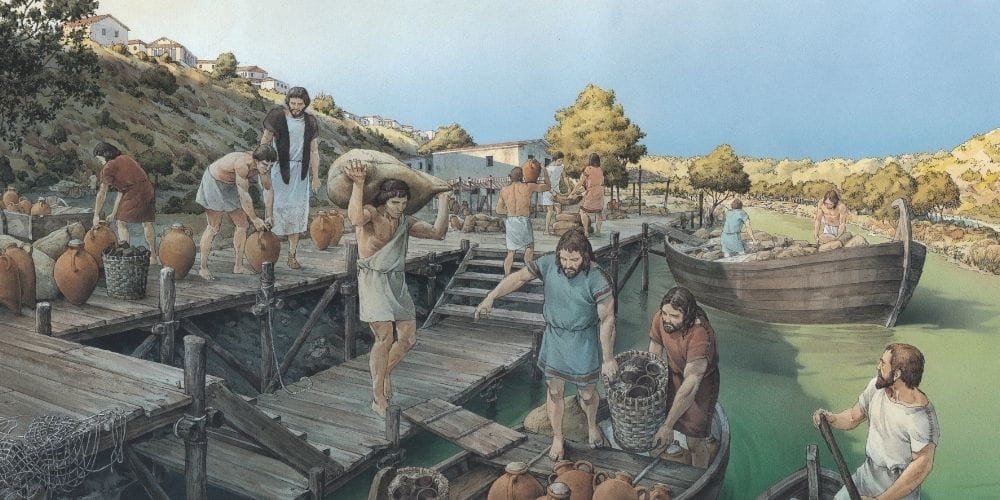
The people of Vulcan were famous for their painted vases, bronze statues and the local grey tuff (nenfro). The archaeological artefacts from the tombs have been spreading around the world since 1828. The wealthy landowner Lucien Bonaparte (the brother of…) understood the benefits of excavation. Unfortunately, these excavations were done without a scientific approach, as a result of which, among other things, the context of objects was lost.
It is extremely instructive to have a complete tomb and to be able to read, from the objects given to the dead, how the people, or at least the elite, dealt with death and life. The frescoes of one tomb, named after a certain François, were even removed entirely by order of Prince Torlonia in Rome, who had bought the land from Bonaparte. Perhaps that is for the best. At least the entire mural is intact and can be viewed by appointment in Palazzo Torlonia.
This content is not shown.
Click on this block to display all our content, by accepting our cookies or review our cooky-policy below.
Vulci is spread over a 120-hectare plain. The city was overrun by the Romans in 280 and the present remains of the city should therefore be considered Roman. The plain is bordered on one side by the river Flora. Across the river is a spectacular looking hanging stone bridge. There are some farms, but it is mainly the emptiness that prevails on the plain. It is a pity that many electricity lines come from a power station that is not in use.
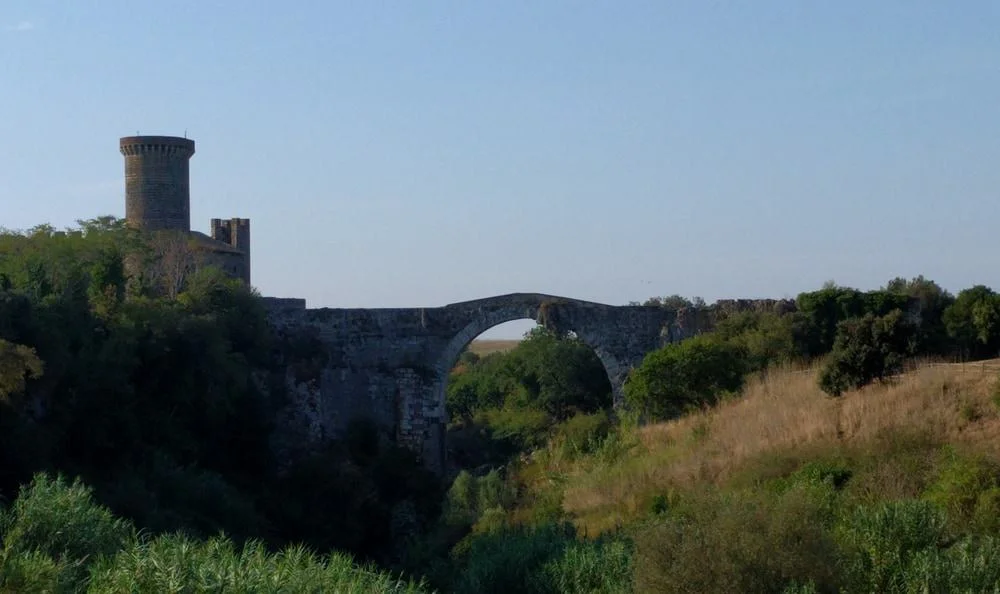
Vulci was part of the union of twelve Etruscan cities (see box). They helped each other in case of need, and delegates met annually for a religious celebration.
RELATED: Vulci and Cerveteri are on our list of best Lazio places. Read which other municipalities are on it.
3. Tarquinia
Tarquinia also belonged to the Etruscan confederation. How the Etruscan city looked, proudly perched on a mountain ridge not far from the sea, can still be seen. Because the Romans and the Middle Ages raged over the city, little Etruscan remains in Tarquinia. Nevertheless, two important treasures have been preserved.
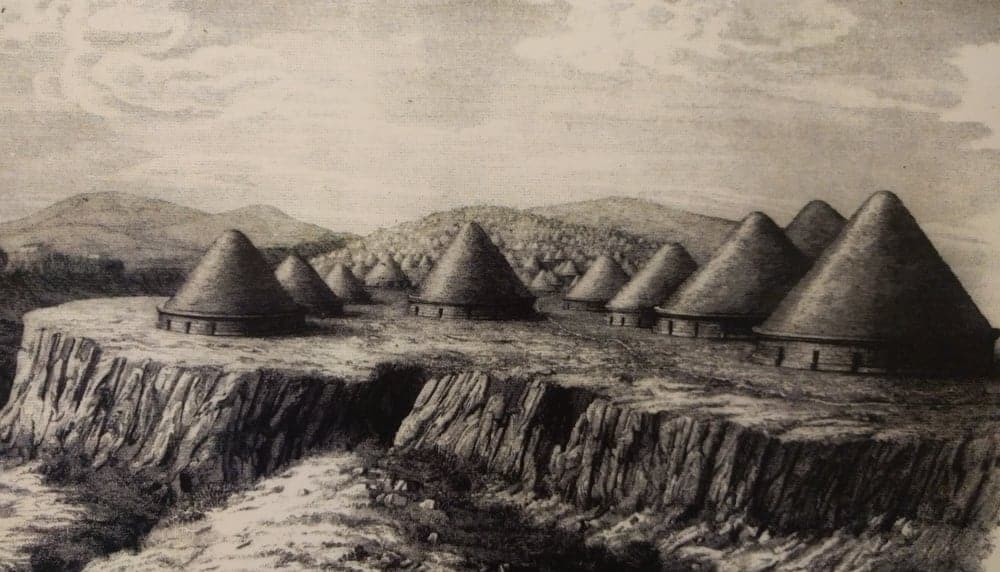
Just outside the city is the necropolis (city of the dead) with fourteen underground tombs with beautiful frescos. Each tomb has a (modern) staircase leading down. Through a glass wall, you can see multicoloured frescoes with a freshness that time (2400 years!) has not touched. Etruscans at a banquet, musicians, fishermen in an abundant sea. Here too, you get the impression that the Etruscans liked – let us say – to relax.
Tarquinia also has a beautiful Etruscan museum, including two winged horses made of terracotta -excellent in their details- which once were part of a temple frieze.
This content is not shown.
Click on this block to display all our content, by accepting our cookies or review our cooky-policy below.
4. Cerveteri
Caidri also belonged to the League of Cities. That was the Etruscan name of possibly the largest town (about 25,000 inhabitants) in Tuscia, which today is called Cerveteri. The archaeological park, the former necropolis, should not be missed. Wherever you look, there are tombs: quadrangular, round, small, large, and also tombstones. All tombs, including the large round ones, have been hewn from volcanic tuff, not from a slope as in Norchia, but from the plateau on which Cerveteri lies.
The dwellings of death tell a lot about life. The tombs mirror the dwellings of the Etruscans. You have the living room model with a roof as if it were made of reeds. This reflects the time when the Etruscans lived in huts. Later tombs show the ‘skyscraper model’, two floors of stone. The rich had larger tombs, especially dome-shaped ones. But because the Etruscans did not yet know the technique of dome construction, they are ‘false’ domes of earth.
In Cerveteri there are also oblong tombs, which are all the same size. “From this we can see that the public space is filled in according to a plan. There seems to be some kind of development plan. Possibly the middle class was growing in importance. There is also a democratic tendency,” says Alessandro, an archaeologist who is showing me around.
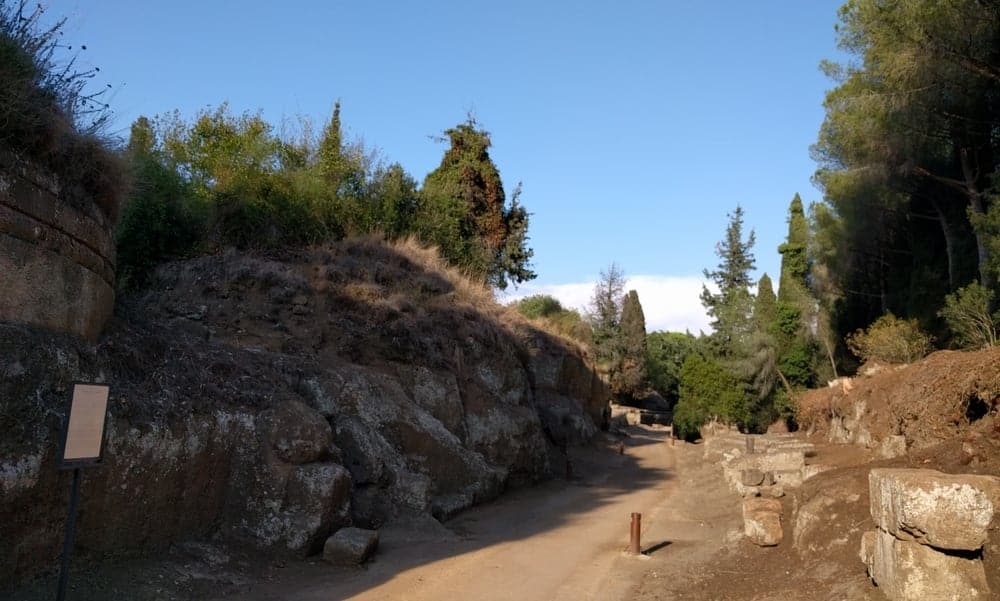
The tombs are empty. There were once corpses (the Etruscans preferred burial to cremation in later times). Once the tombs were full of precious objects. Much of it has been looted and hangs, often ‘anonymously’, in museums all over the world or in people’s homes.
Fortunately, there is still much to see in the Etruscan Museum in Rome. If Rome is not in the planning, it is nice to visit the local museum of Cerveteri. Alessandro guides me through the exhibition space where time has apparently stood still since its completion in 1976. There are two floors and they are jam-packed with showcases of grave finds.
This content is not shown.
Click on this block to display all our content, by accepting our cookies or review our cooky-policy below.
The Etruscans saw death as a journey. On that journey, you needed attributes. It was also an opportunity to demonstrate their status during the funeral ceremony. You have to know the social codes of that time. In a showcase, we see a bronze razor. This obviously comes from a man’s grave. “It belongs to an adolescent”, says Alessandro. “A sign that the boy had begun to grow hair. That he was not a child, but almost a man.”
Whether he (already) had a fat belly is not known.
This text about Etruria is an excerpt from my book on Lazio:
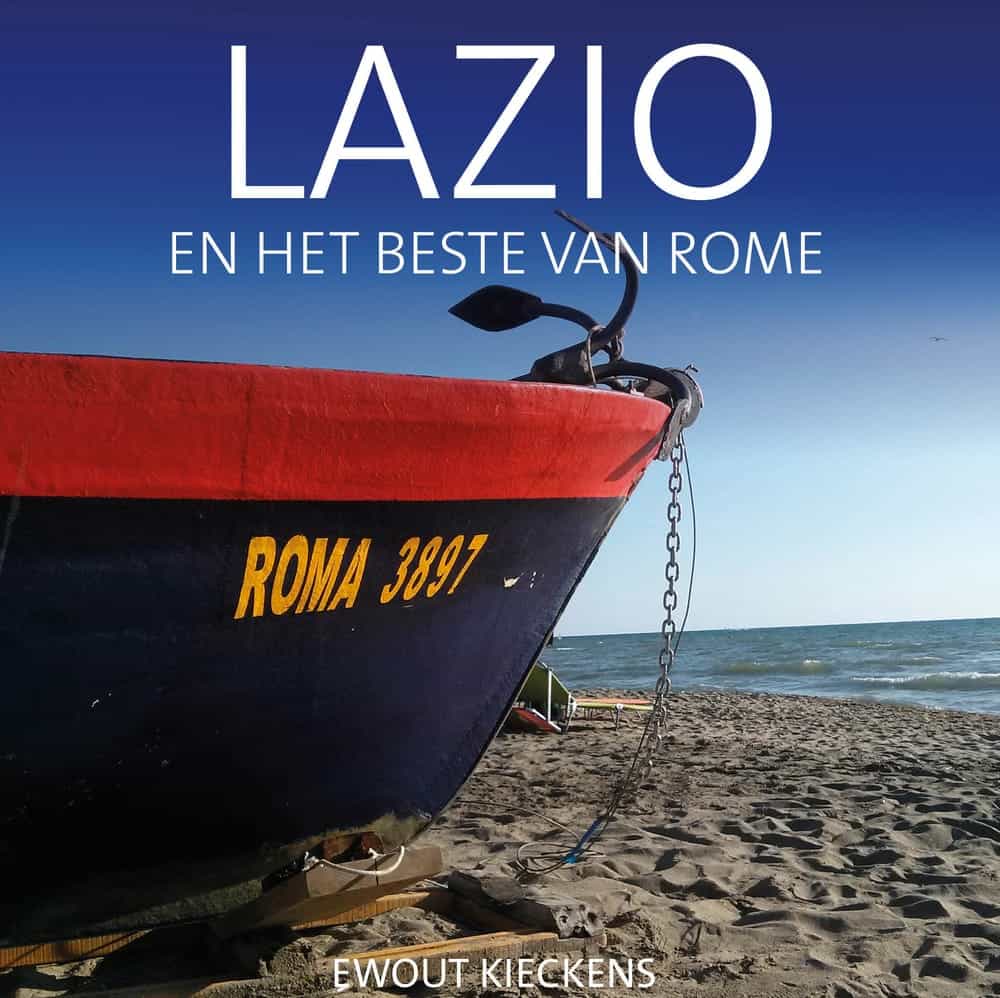
All the 12 cities of Etruria
The Etruscans had no central power and were only loosely organised among themselves. The common denominator was that they shared the same culture, language and religion. The twelve most important cities kept in touch with each other, especially on a religious level. It is known that representatives of the twelve cities met in a sanctuary near Volsini (possibly today’s Orvieto).
The so-called ‘dodecapoli’ probably included:
- Vulci
- Veio
- Tarquinia
- Cerveteri (in present-day Lazio) and
- Volterra
- Vetulonia
- Roselle and
- Chiusi (Tuscany) and
- Volsini
- Arezzo
- Perugia
- Cortona (Umbria)
However, the alliance was politically and militarily not very strong. After a long siege, the city of Veio fell into the hands of Rome in 396 BC. None of the other Etruscan cities intervened. After Veio, one after the other Etruscan cities had to acknowledge the superiority of Rome. Some cities fought, others joined Rome voluntarily. After the fall of Volsini in 264 it was over. The Etruscans merged definitively with the Romans.
This content is not shown.
Click on this block to display all our content, by accepting our cookies or review our cooky-policy below.
Visit Etruria yourself
- Cerveteri, Necropolis of Banditaccia at Piazzale Mario Moretti. Open from 8.30 am to one hour before sunset. Closed on Mondays.Cerveteri, Archaeological museum, Piazza S. Maria 1. Open: 8.30-18.30, closed on Mondays.
- Norchia. Located six kilometres from the main road (SS 1 bis) between Taquinia and Vetralla. (Brown) road signs point to the site. Freely accessible
- Rome, Tomb of Francois in Villa Torlonia at Via Salaria 92. By appointment: +39 066861044 (Italian) or [email protected] (request well in advance).
- Rome, National Etruscan Museum at Villa Giulia, Piazzale di Villa Giulia 9. Open from 8:30 to 19:30. Closed on Mondays.
- Tarquinia, Necropolis of Monterozzi, Via Ripagretta. Open from 8.30 to one hour before sundown. Closed on Mondays.
- Tarquinia, Archaeological museum, Piazza Cavour 2. Open: 8.30-19.30. Closed on Mondays.
- Vulci, Archaeological park, Strada Provinciale 107 in Montalto di Castro. Open: 9am-5pm. Longer in summer.

